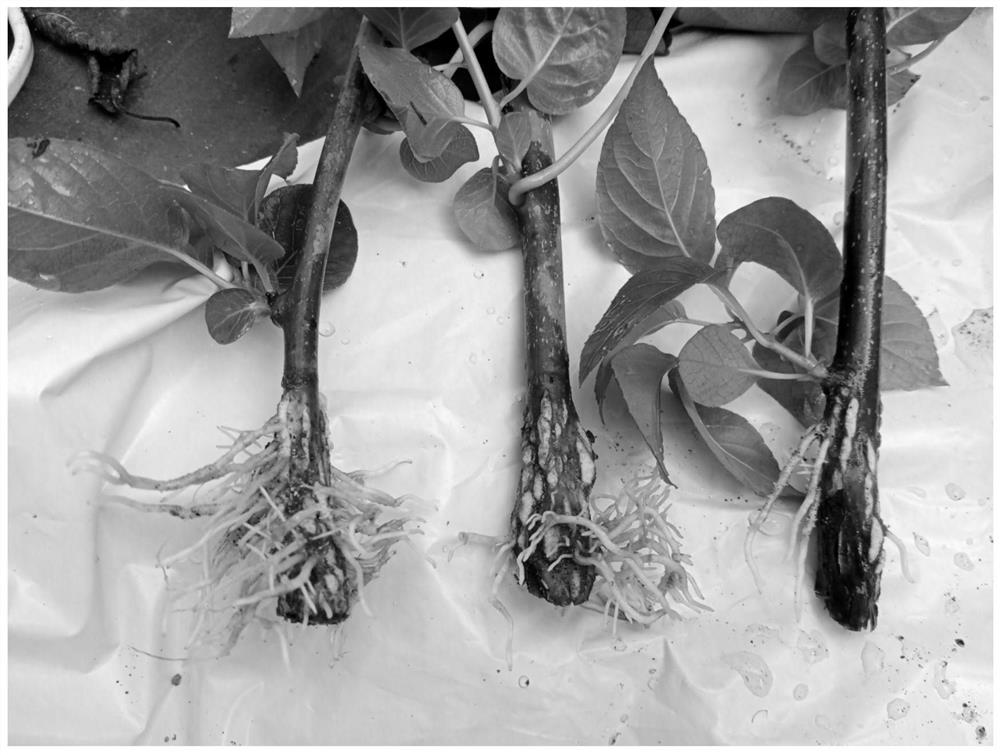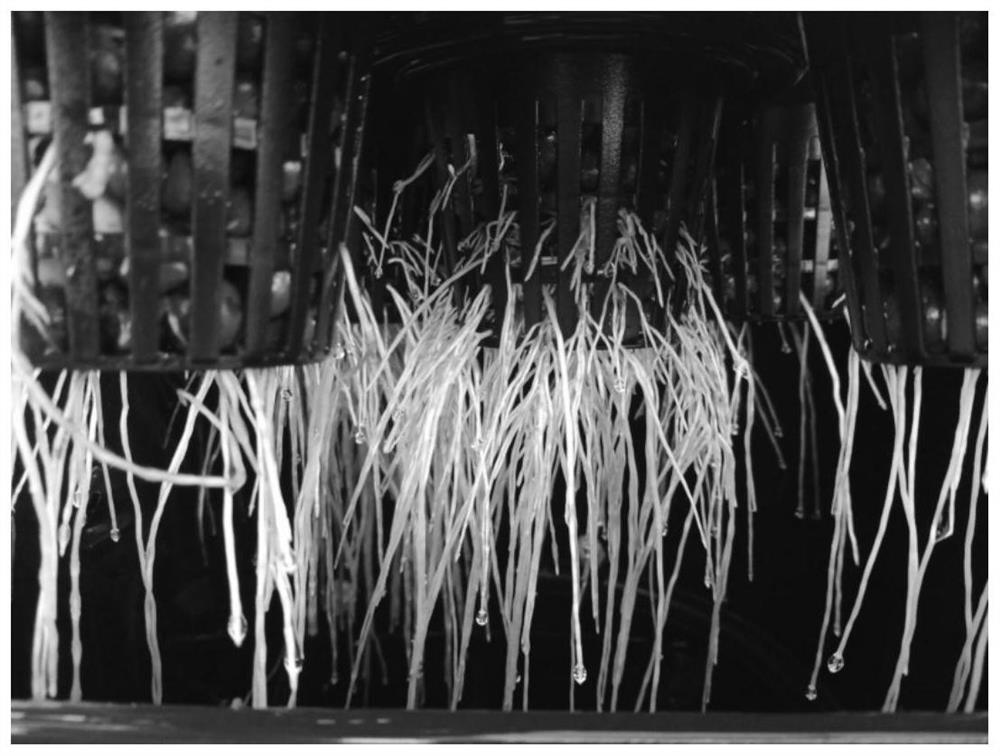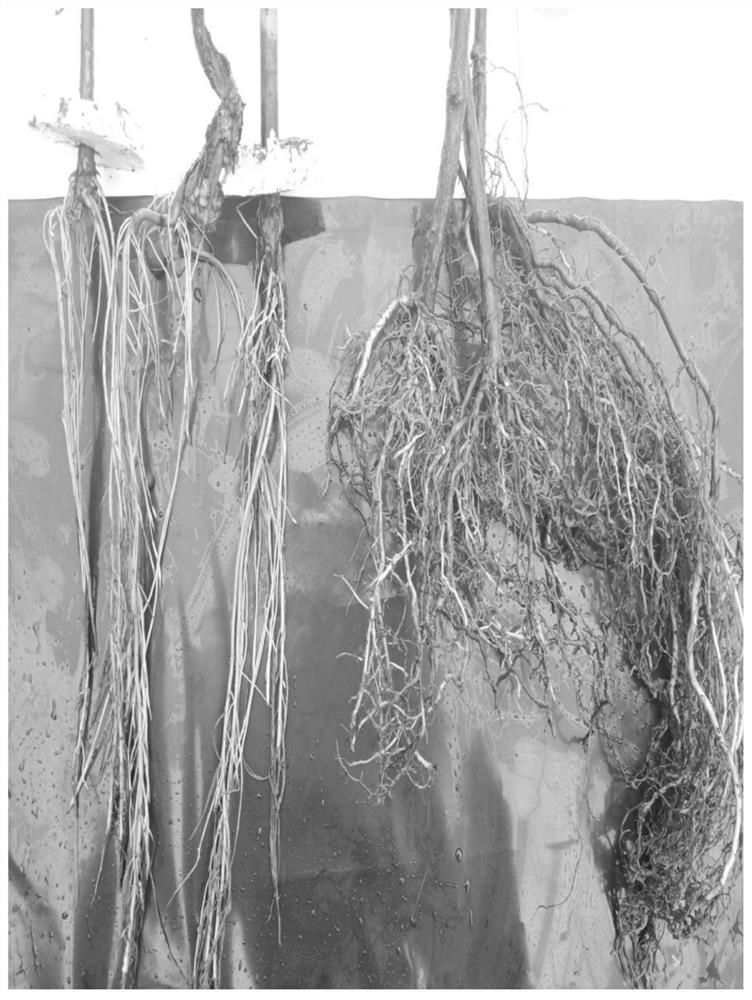Method for inducing aquatic root system of kiwi fruit
A technology for root induction and kiwifruit, applied in the field of kiwifruit cultivation, can solve the problems of high degree of suberization of root branches, poor porosity, poor ventilation and water permeability, and low survival rate of cutting seedlings, and achieves the effect of high survival rate.
- Summary
- Abstract
- Description
- Claims
- Application Information
AI Technical Summary
Problems solved by technology
Method used
Image
Examples
Embodiment 1
[0031] 1 Pretreatment: pruning the leafy branches in the growth period of lignification or the branches after falling leaves to a length of 20 cm, the lower end of phase morphology, that is, the cuttage part, is cut longitudinally at 2 places with a sterilized blade, and the depth does not exceed the xylem, and the wound with a length of 2.5 cm, spare;
[0032] 2 For cuttings, use sterilized fine sand as the cutting substrate, laying the thickness of 10cm, insert the prepared branches into the fine sand to a depth of 4cm, pour water once after the cuttings are completed, and replenish water in a timely manner according to changes in temperature and humidity in the later stage;
[0033] 3 When the temperature of the transplanting seedbed is 22°C and the humidity is suitable, the growth of the root system can be checked for 30 days. If the root system has grown and the number of branches is less than 3 times, it can be transplanted; before transplanting, pull out the cuttings and...
Embodiment 2
[0037] Effect of substrate on kiwifruit cutting seedlings:
[0038] (1) Select kiwifruit branches with thickness and high lignification degree for cutting, and cut each branch to leave 3 buds with a length of 15cm;
[0039] (2) each substrate prepared in advance is packed in the seedling pot, thickness 10cm;
[0040] (3) 2 wounds are longitudinally drawn with a knife on the lower end of the standby branch, deep to the xylem, for subsequent use;
[0041] (4) insert the branch cuttage that handles in each seedling-growing pot, insert depth 2cm;
[0042] (5) Reasonably water according to the humidity of each substrate to keep the substrate wet and not waterlogged;
[0043] (6) After 25 days of cutting, the statistics of the survival rate were carried out, and those with more than 2 root systems were considered to be alive.
[0044] The selected substrates are fine sand, clay, fine sand + clay, and the volume ratio of fine sand and clay is 1:1.
[0045] The results are shown i...
Embodiment 3
[0051] (1) Plant the kiwifruit seedlings of the same batch of cuttage rooted in soil and water mist culture respectively (the temperature of soil culture is controlled at 20-23 ℃, pour water once every 2 days, and keep the soil humidity good) (and the water in Example 1 Fog cultivation method is the same);
[0052] (2) take out the seedling after it grows for 5 months, clean up the root and wait for its statistics;
[0053] (3) The root system directly grown from the base of the cutting branch is a first-level branch, and the branch level of the root system increases by one for each subsequent branch, and so on. depends. The results are shown in Table 2.
[0054] Table 2 Effects of different cultivation methods on the number of root branches of kiwifruit
[0055] Cultivation method Proportion of two-level branch Proportion of third-level branches The proportion of four branches soil cultivation 4.20% 36.20% 59.60% Water mist cultivation 72.30% ...
PUM
 Login to View More
Login to View More Abstract
Description
Claims
Application Information
 Login to View More
Login to View More - R&D
- Intellectual Property
- Life Sciences
- Materials
- Tech Scout
- Unparalleled Data Quality
- Higher Quality Content
- 60% Fewer Hallucinations
Browse by: Latest US Patents, China's latest patents, Technical Efficacy Thesaurus, Application Domain, Technology Topic, Popular Technical Reports.
© 2025 PatSnap. All rights reserved.Legal|Privacy policy|Modern Slavery Act Transparency Statement|Sitemap|About US| Contact US: help@patsnap.com



